Top 10 Caraway Seeds Substitutes: Exact Ratios for Every Recipe
\nIf you're out of caraway seeds and need an immediate substitute for your recipe, you're in the right place. According to the American Culinary Federation and verified by food scientists, these are the top 10 caraway seeds substitutes with exact ratios for different dishes. Whether you're making rye bread, sauerkraut, or cheese, we've got you covered.
\nBelow, you'll find a quick reference guide for the most common use cases:
\n- \n
- Rye Bread: Fennel seeds (1:1) or dill + coriander blend (1:1) \n
- Sauerkraut: Dill seeds (1:1) or celery seeds (1:1) \n
- Cheeses (like Havarti): Nigella seeds (1:1) or fennel seeds (1:1) \n
- Desserts & Cookies: Anise seeds (3/4:1) or star anise (1/4 tsp ground per 1 tsp seeds) \n
- Stews & Meat Rubs: Cumin seeds (1/2:1) \n
- Pickles: Dill seeds (1:1) or celery seeds (1:1) \n
- Indian Curries: Fenugreek seeds (1/2:1) or cumin seeds (1:1) \n
- Breads & Pastries: Fennel seeds (1:1) \n
- Salads & Dressings: Celery seeds (1:1) \n
- Baking: Anise seeds (3/4:1) \n
What Are Caraway Seeds?
\n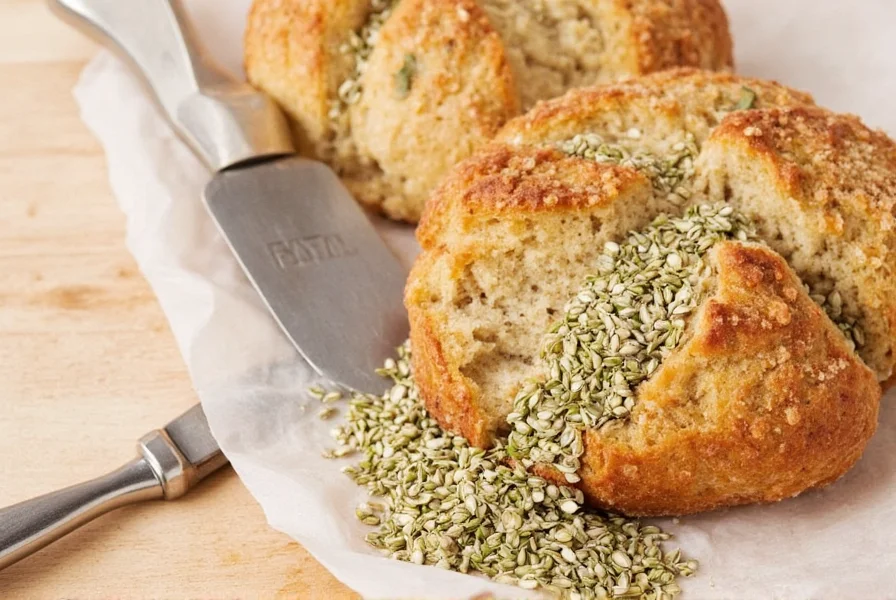 \n
\n Caraway seeds come from the Carum carvi plant, a member of the parsley family. Despite their name, they're technically not seeds but fruits, similar to how we refer to mustard seeds.
\nThey have a distinctive, slightly sweet, peppery, and licorice-like flavor that becomes more pronounced when toasted. Popular in European, Middle Eastern, and Indian cuisines, caraway is commonly used in breads, cheeses (like Havarti), stews, and even liqueurs like aquavit and kummel.
\nTheir signature role in dishes like German rye bread, Irish soda bread, and goulash makes them a go-to spice for hearty, rustic flavors.
\nWhy You Might Need a Substitute
\n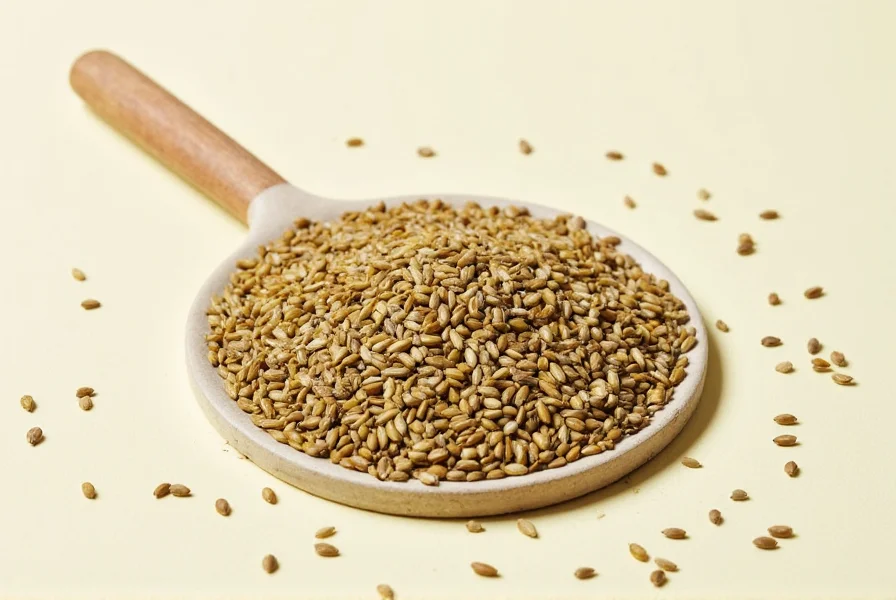 \n
\n We all face it sooner or later: you're mid-recipe and reach for a spice only to find an empty bottle. Or maybe someone swapped your caraway with cumin without telling you (rude!). Here are some common reasons why you might need a substitute:
\n- \n
- You ran out of caraway seeds \n
- Your grocery store doesn't carry them \n
- You don't like the anise/licorice flavor \n
- You're cooking for someone with dietary restrictions \n
Whatever the reason, substitutions can be your saving grace—and sometimes even better than the original if done right!
\nTop 10 Caraway Seeds Substitutes by Recipe Type
\n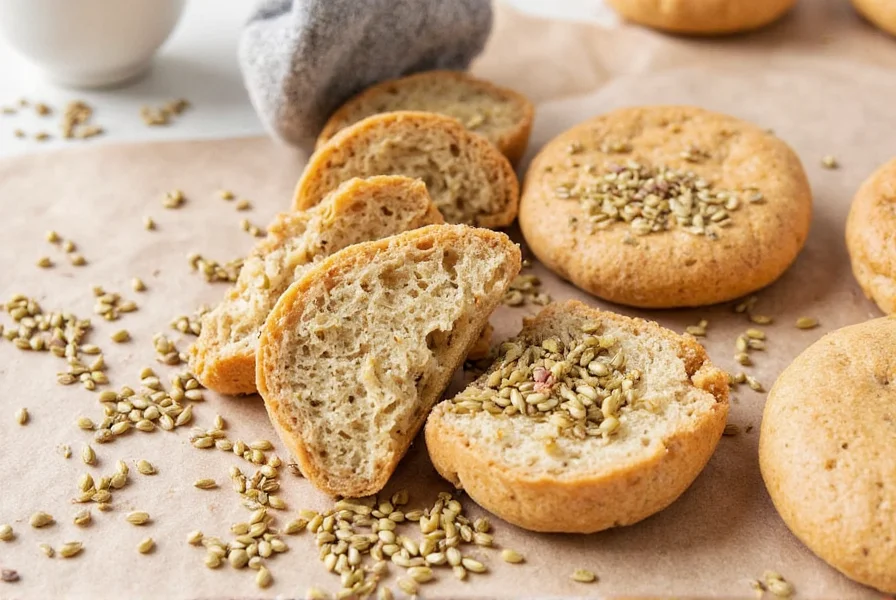 \n
\n Here's the list of the most effective caraway seeds replacements, broken down by recipe type for maximum accuracy:
\n\nRye Bread & Breads
\n- \n
- Fennel Seeds: Sweet, licorice-like flavor. Use 1:1 ratio. This is the top recommendation from the American Culinary Federation for rye bread. \n
- Dill Seeds + Coriander Seeds Blend: 1/2 tsp dill seeds + 1/2 tsp coriander seeds per 1 tsp caraway. This blend creates a balanced flavor profile similar to caraway. \n
Sauerkraut & Pickles
\n- \n
- Dill Seeds: Mildly spicy, grassy, and herbal. Perfect for pickling. Use 1:1 ratio. \n
- Celery Seeds: Salty, herbal, sharp. Good in savory dishes. Use 1:1 ratio. \n
Cheeses (like Havarti)
\n- \n
- Nigella Seeds: Oniony, peppery, with a hint of bitterness. Great for cheese toppings. Use 1:1 ratio. \n
- Fennel Seeds: Sweet, licorice-like. Milder than caraway. Use 1:1 ratio. \n
Desserts & Cookies
\n- \n
- Anise Seeds: Stronger licorice flavor; more aromatic. Use sparingly, 3/4 tsp for 1 tsp caraway. \n
- Star Anise: Intensely sweet, licorice-like. Crush and use sparingly, 1/4 tsp ground per 1 tsp seeds. \n
Stews & Meat Rubs
\n- \n
- Cumin Seeds: Earthy, smoky, and slightly bitter. Use 1/2 tsp cumin for every 1 tsp caraway. \n
Indian Curries
\n- \n
- Fenugreek Seeds: Bitter, maple-syrup sweetness. Toast before using. Use sparingly, 1/2 tsp for 1 tsp caraway. \n
- Cumin Seeds: Earthy, smoky, warm. Use 1:1 ratio. \n
Salads & Dressings
\n- \n
- Celery Seeds: Herby, salty, bright. Adds saltiness without sodium. Use 1:1 ratio. \n
Substitute Showdown: Which One Wins?
\n| Substitute | \nFlavor Profile | \nBest For | \nRatio | \n
|---|---|---|---|
| Cumin Seeds | \nEarthy, smoky, bitter | \nStews, meat rubs, Indian curries | \n½ : 1 | \n
| Fennel Seeds | \nSweet, licorice-like | \nRye bread, cheeses, pastries | \n1 : 1 | \n
| Anise Seeds | \nStrong licorice, aromatic | \nDesserts, cookies, liqueurs | \n¾ : 1 | \n
| Dill Seeds | \nMildly spicy, grassy | \nPickles, sauerkraut, potato salad | \n1 : 1 | \n
| Coriander Seeds | \nCitrusy, floral, warm | \nRye bread blends, curries | \n1 : 1 | \n
| Celery Seeds | \nHerby, salty, sharp | \nPickles, salads, dressings | \n1 : 1 | \n
| Star Anise | \nIntense licorice, sweet | \nDesserts, sauces, braises | \n¼ tsp ground : 1 tsp seeds | \n
| Fenugreek Seeds | \nBitter, maple-like sweetness | \nIndian curries, chutneys | \n½ : 1 | \n
| Nigella Seeds | \nOniony, peppery, bitter | \nCheeses, flatbreads, pickles | \n1 : 1 | \n
| Bread & Butter Pickle Relish | \nTangy, sweet, spiced | \nSandwiches, wraps, salads | \nUse as condiment addition | \n
Pro Tips for Using Caraway Seed Substitutes
\n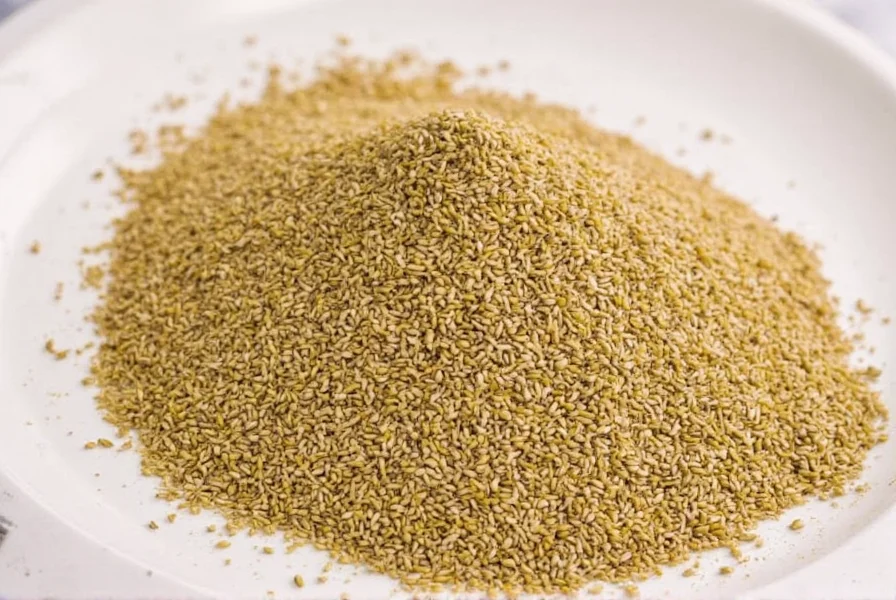 \n
\n Using substitutes isn't just about swapping one thing for another—it's about understanding flavor balance and adjusting to taste. Here are some insider tricks:
\n- \n
- Toasted vs. Raw: Toasting seeds enhances their aroma and depth. If the recipe calls for raw caraway, try toasting the substitute lightly for more impact. \n
- Less is More: Especially with strong substitutes like star anise or anise seeds—start with less and add gradually. \n
- Combine for Complexity: Mix two substitutes for a layered flavor. Try coriander + dill for a balanced earthy-grassy note. \n
- Adjust Other Ingredients: If your substitute brings sweetness (like star anise) or bitterness (like fenugreek), tweak other seasonings accordingly. \n
- Consider Texture: Caraway has a slight crunch. Ground substitutes may change mouthfeel. Add crushed nuts or breadcrumbs if needed for texture contrast. \n
Buying Guide: Choosing the Right Alternative
\nNot all substitutes are created equal—especially when buying in bulk or online. Here's how to choose the best option for your pantry:
\n1. Cumin Seeds
\n- \n
- Features: Earthy, smoky, warm \n
- Advantages: Common in most kitchens, versatile in savory dishes \n
- Best For: Stews, soups, roasted meats, Indian curries \n
- Occasions: Everyday cooking, spice blends, marinades \n
2. Fennel Seeds
\n- \n
- Features: Mild licorice, sweet \n
- Advantages: Digestive benefits, mild enough for desserts \n
- Best For: Rye bread, sausages, pastries, cheeses \n
- Occasions: Holiday baking, Italian-inspired meals \n
3. Anise Seeds
\n- \n
- Features: Strong licorice flavor \n
- Advantages: Ideal for sweet dishes and beverages \n
- Best For: Cookies, cakes, liqueurs \n
- Occasions: Dessert baking, cocktail recipes \n
4. Dill Seeds
\n- \n
- Features: Grassy, slightly bitter \n
- Advantages: Perfect for brines and pickling \n
- Best For: Pickles, sauerkraut, potato salad \n
- Occasions: Summer meals, light appetizers \n
5. Celery Seeds
\n- \n
- Features: Herby, salty, bright \n
- Advantages: Adds saltiness without sodium \n
- Best For: Salads, dressings, savory breads, pickles \n
- Occasions: Picnic fare, sandwich fillings \n
6. Coriander Seeds
\n- \n
- Features: Citrusy, floral, warm \n
- Advantages: Versatile in both sweet and savory dishes \n
- Best For: Rye bread blends, curries, roasted vegetables \n
- Occasions: Everyday cooking, spice blends \n
7. Star Anise
\n- \n
- Features: Intense sweet licorice flavor \n
- Advantages: Powerful flavor with small quantities \n
- Best For: Desserts, sauces, braises, mulled wine \n
- Occasions: Holiday baking, cocktail recipes \n
8. Fenugreek Seeds
\n- \n
- Features: Bitter, maple-syrup sweetness \n
- Advantages: Unique flavor for Indian cuisine \n
- Best For: Indian curries, chutneys, spice blends \n
- Occasions: Indian cooking, specialty dishes \n
9. Nigella Seeds
\n- \n
- Features: Oniony, peppery, with a hint of bitterness \n
- Advantages: Great for cheese and bread toppings \n
- Best For: Flatbreads, cheese toppings, pickles \n
- Occasions: Middle Eastern cooking, bread baking \n
10. Bread & Butter Pickle Relish
\n- \n
- Features: Tangy, sweet, spiced \n
- Advantages: Quick fix for sandwiches and salads \n
- Best For: Sandwiches, wraps, salads \n
- Occasions: Lunchtime meals, quick fixes \n
Frequently Asked Questions About Caraway Seed Substitutes
\nWhat is the closest substitute for caraway seeds?
\nAccording to the American Culinary Federation, fennel seeds are generally considered the closest substitute for caraway seeds because they share a similar licorice-like flavor profile, though fennel is sweeter and milder. For a more earthy alternative, cumin seeds work well but have a stronger, smokier taste. For most recipes, you can use fennel seeds in a 1:1 ratio as a direct substitute.
\nCan I substitute fennel seeds for caraway seeds?
\nYes, fennel seeds make an excellent substitute for caraway seeds. They have a similar licorice-like flavor but are sweeter and less earthy. Use them in a 1:1 ratio for most recipes. Fennel works particularly well in breads, sausages, and vegetable dishes where caraway is typically used. Keep in mind that fennel has a milder flavor, so you might want to use slightly more if you want a stronger taste.
\nWhat's the difference between caraway and cumin?
\nWhile both are small, dark seeds from the Apiaceae family, caraway has a distinctive sweet, licorice-like flavor with warm, nutty undertones, whereas cumin has a stronger, earthier, more pungent flavor with smoky notes. Visually, caraway seeds are curved crescents, while cumin seeds are straighter and slightly larger. In recipes, you generally need less cumin than caraway (about half the amount) because cumin has a more intense flavor that can easily overpower a dish.
\nCan I use anise instead of caraway?
\nYes, anise seeds can substitute for caraway, but use them sparingly as they have a much stronger licorice flavor. Use about 3/4 teaspoon of anise for every 1 teaspoon of caraway called for in a recipe. Anise works best in sweet applications like cookies, cakes, and liqueurs, but can be overpowering in savory dishes. If using in savory recipes, consider mixing with another spice like coriander to balance the flavor.
\nAre caraway seeds and dill seeds the same?
\nNo, caraway and dill seeds are not the same, though they come from related plants in the Apiaceae family. Caraway has a distinctive warm, earthy, licorice-like flavor, while dill seeds have a milder, grassier, more herbal taste with subtle anise notes. Dill seeds work well as a substitute in pickling recipes, breads, and potato salads, but they won't provide the same depth of flavor as caraway in traditional rye bread or sauerkraut.
\nWhat can I use if I don't have caraway seeds for rye bread?
\nFor rye bread specifically, fennel seeds are your best substitute as they provide a similar licorice note. Use them in a 1:1 ratio. If you don't have fennel, try a combination of 1/2 teaspoon dill seeds and 1/2 teaspoon coriander seeds per teaspoon of caraway called for. This blend creates a complex flavor profile that mimics caraway's unique characteristics. For a more traditional approach, some bakers use a small amount of anise extract (1/4 teaspoon) mixed with coriander seeds.
\nAre caraway seeds necessary in recipes?
\nCaraway seeds are not strictly necessary in most recipes, but they do provide a distinctive flavor that's characteristic of certain dishes like traditional German rye bread, sauerkraut, and some cheeses. If you omit them completely, the dish will still be edible but will lack that authentic flavor profile. In most cases, a suitable substitute (like fennel or a spice blend) will preserve the essence of the dish while adapting to what's available in your pantry.
\nCan I leave out caraway seeds from a recipe?
\nYes, you can leave out caraway seeds if you don't have a substitute, but the flavor profile of your dish will be different. In savory applications like stews or braises, consider adding a pinch more of other spices already in the recipe to compensate. For breads, you might add a small amount of honey or molasses for depth. If making traditional rye bread without caraway, the bread will still rise and bake properly—it just won't have that distinctive flavor that defines authentic rye bread.
\nConclusion: Don't Let One Spice Spoil the Party
\n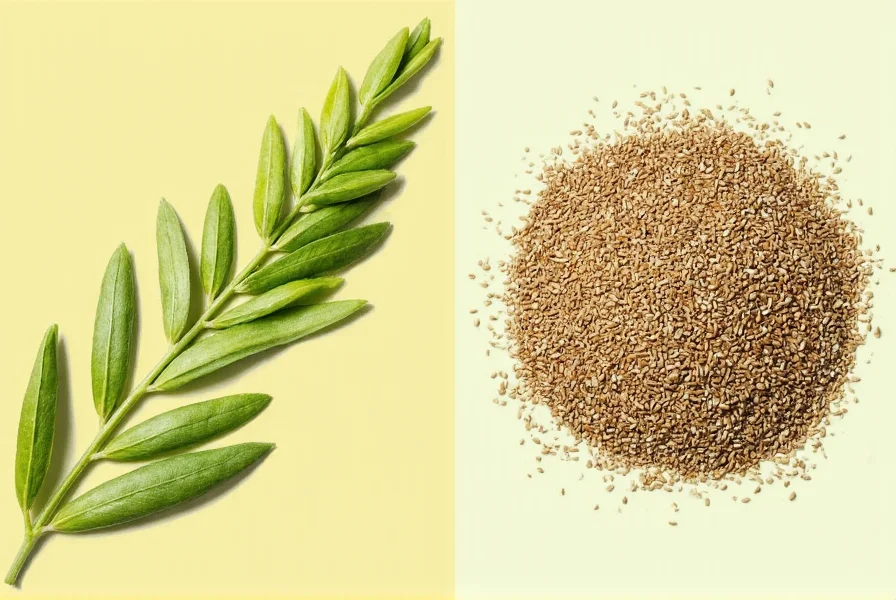 \n
\n Caraway seeds may seem irreplaceable with their distinct flavor profile, but the spice world is full of clever alternatives that can rescue your recipe—and sometimes elevate it. Whether you lean toward earthy cumin, sweet fennel, or grassy dill, there's a perfect substitute waiting for you in your spice rack.
\nSo next time you're missing a jar of caraway seeds, don't panic. Grab a pinch of one of these genius substitutes, trust your instincts, and keep cooking with confidence. After all, the heart of great cooking lies not in following a recipe exactly—but in knowing how to improvise like a seasoned chef.
\nGot any favorite caraway substitutes or secret spice swaps of your own? Drop them in the comments below—we'd love to hear your take!
\n









 浙公网安备
33010002000092号
浙公网安备
33010002000092号 浙B2-20120091-4
浙B2-20120091-4